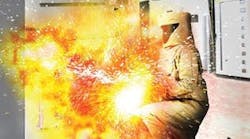Articles 511 through 517 cover specific kinds of occupancies. The general rules of the NEC and the provisions of Arts. 500 through 504 apply, except as modified by the applicable 511 through 517 Articles [Sec. 510.2]. Article 511 provides the requirements for garages used for repair and storage. Parking garages don’t have to be classified.
It matters whether a garage is used for major or minor repairs [Sec. 511.2]. For example, refer to Table 511.3(C). Looking at the requirements for a major repairs garage, we see a Class I, Division 1 classification for “Entire space within any pit, below grade work area, or subfloor work area that is not ventilated.” When this description is applied to a minor repair garage the classification is Class I, Division 2. There are other differences, too.
Table 511.3(C) applies to garages with heavier than air fuel. Table 511.3(D) applies to garages with lighter than air fuel. In Table 511.3(D) major repair garages are classified as Class I, Division 2 under one set of criteria and unclassified under another set. Minor repair garages don’t even appear in this table.




